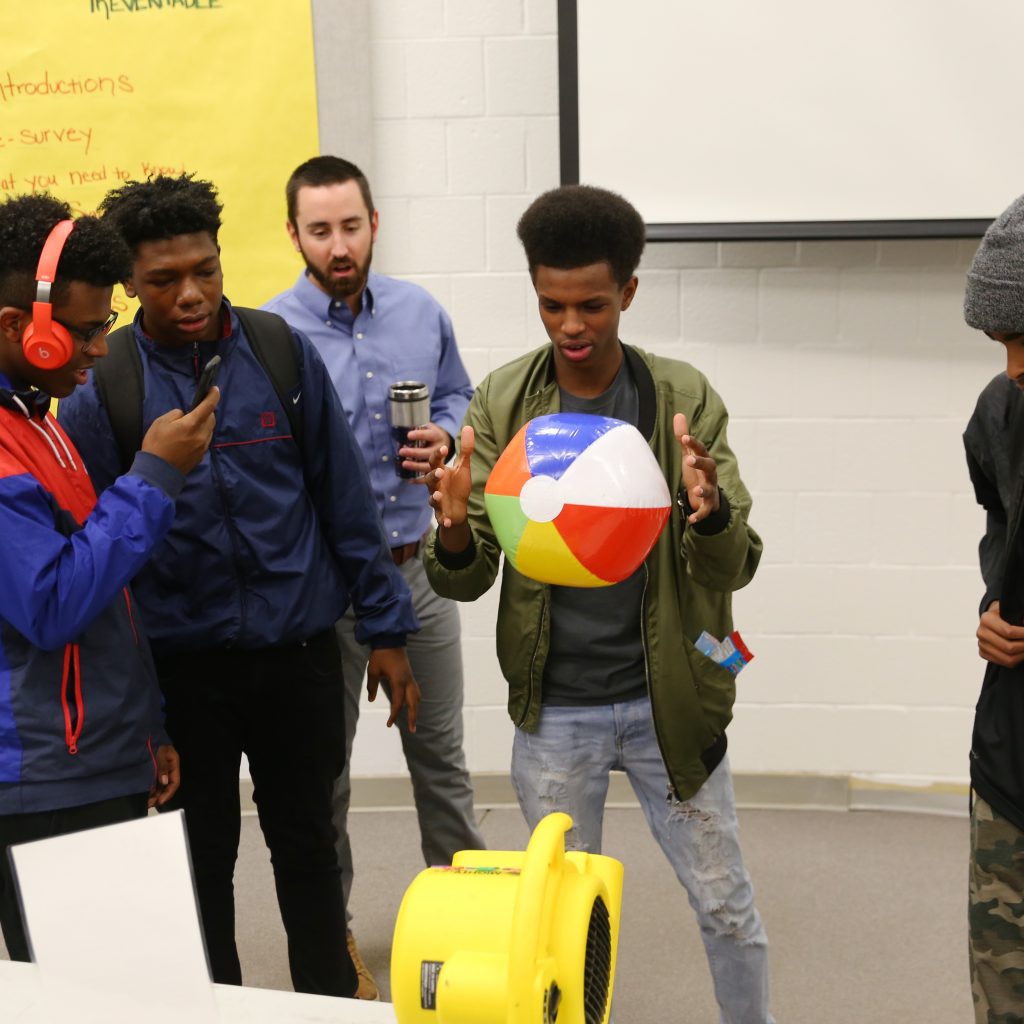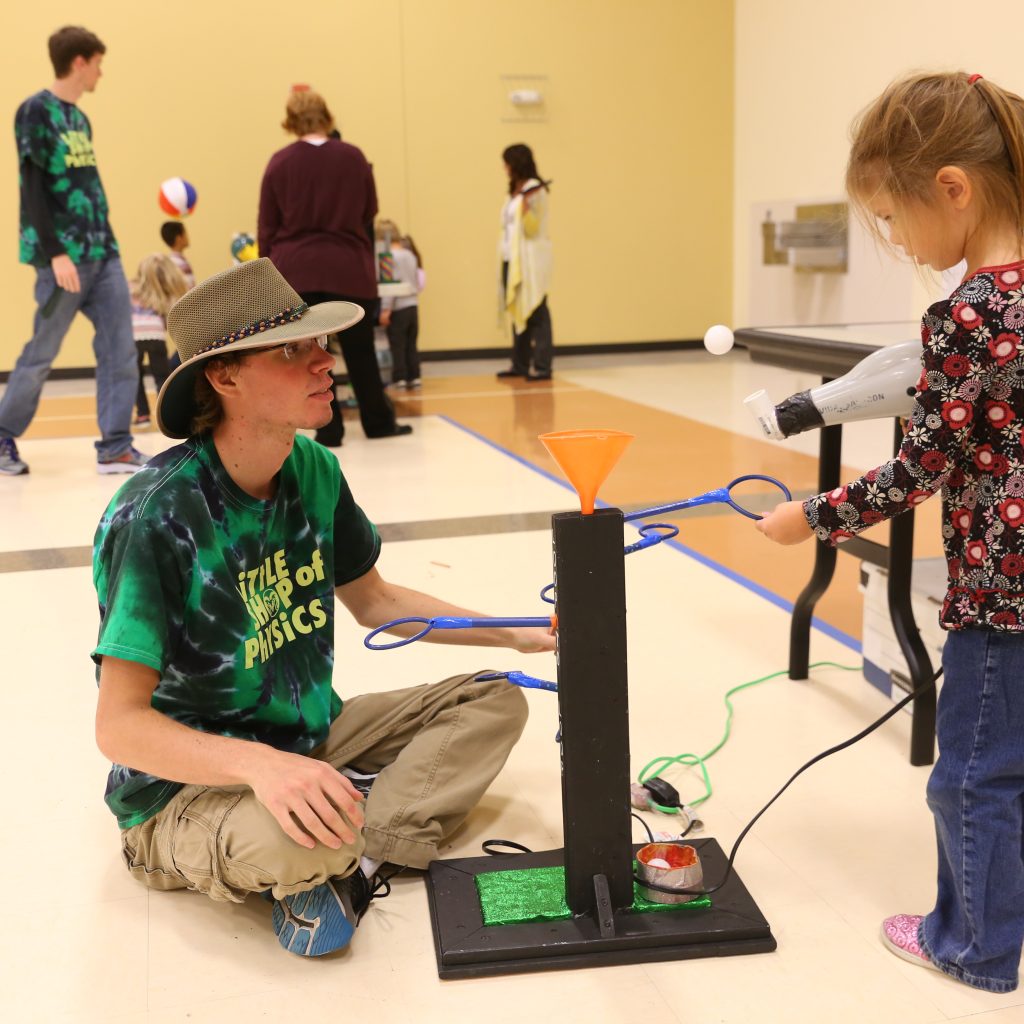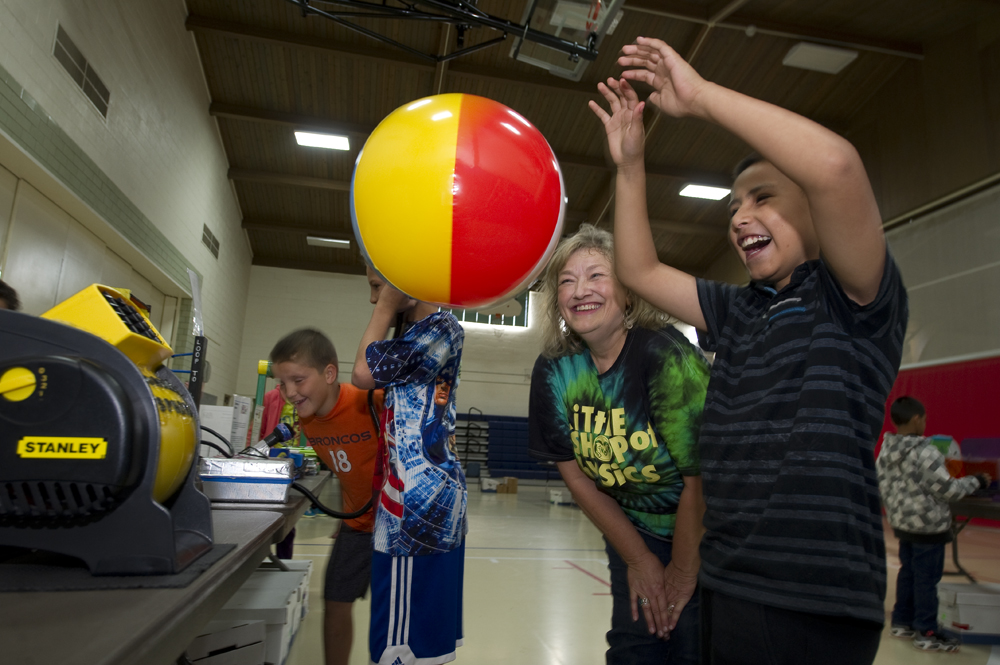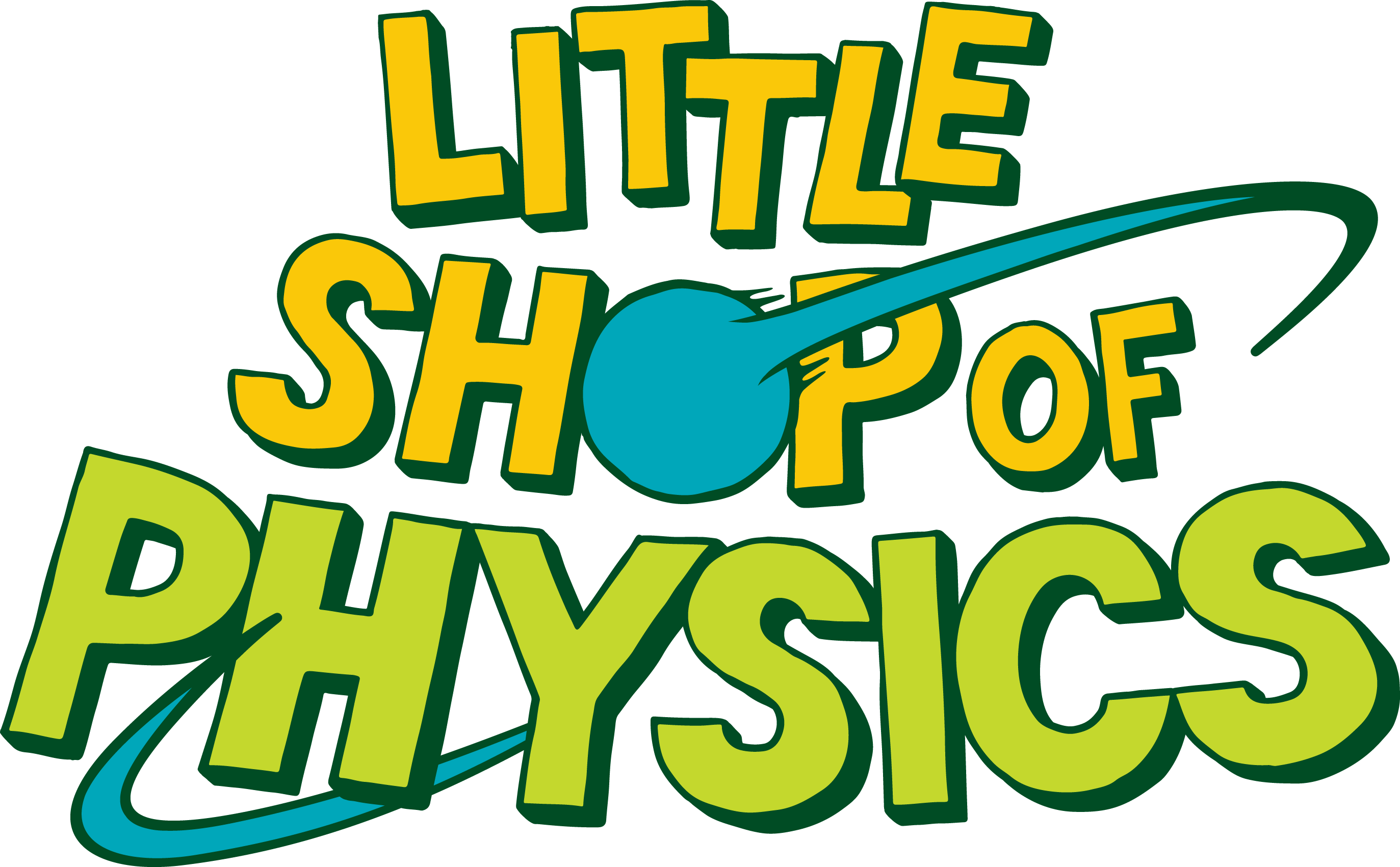Everything You Need to Know About Fluids in Motion
What keeps airplanes up? What happens to Earth’s atmosphere as the planet spins? For answers to these questions and more, read on!
When you read the title of this post, what came to mind first? Perhaps ocean waves, or your circulatory system? These are indeed examples of fluids in motion (and very interesting ones!), but there’s much more to the story. Air is also a fluid, and follows many of the same physical rules as water. This fact lets us demonstrate and explore many important properties of fluids in motion in the classroom.
Theory
In colloquial use, ‘fluid’ is typically synonymous with ‘liquid.’ But to a physicist, a fluid is anything that flows — the term encompasses liquids and gases. The material presented here deals almost entirely with the flow of air. We describe the flow of fluids as either laminar (smooth, like the water coming out of your faucet) or turbulent (rough, like river rapids).
As you consider this material, it’s key to remember that Newton’s Laws apply to fluids in motion. If a fluid is pushing on an object, the object must be pushing on the fluid with an equal and opposite force! This is crucial for air travel — an airplane’s wings (by virtue of their shape and angle with respect the plane in which the airplane is moving) push down on the air, so the air pushes up on the airplane’s wings. In stable flight, this lift force precisely counters the downward pull of gravity on the plane.
Application
Hands-on experimentation as a precursor and supplement to brief lecture segments will go a long way toward helping your students understand the basic properties of fluids in motion. Below area series of videos that will help you develop an active and engaging lesson plan on this topic. We’ve organized the videos in terms of “the 5 E’s”: Engage, Explore, Explain, Extend, and Evaluate. This structure has worked well for us in teacher workshops, and we hope it works well for you too! However, we always welcome your feedback. Please contact us anytime to let us know what’s working, what’s not, and how we can make this resource more useful for you. Enjoy!
Engage
The purpose of the Engage segment is to pique students’ interest. We don’t need to directly transmit concepts at this stage, merely give students a chance to think and get excited about the topic we’ll be discussing.
Video: Microbursts
A microburst is an extreme atmospheric event; it is a tight column of air that falls downward, then flows outward in all directions from its point of contact with the earth. In this video, we make the motion of the fluid during such an event visible by dropping a giant fog-filled weather balloon onto a sharp point. Do you notice the similarity to a water droplet (also a ball of fluid) striking a surface and splashing outward?
Explore
In the explore segment, students get to experience firsthand the principles we hope to teach them. We still don’t need to explicitly describe any concepts yet — the students will start working these out as they explore.
Video 1: Soaring Sphere
An LSOP classic, a cinch to build, and a lovely demonstration of what can happen when fluids flow! We use a strong blower to levitate a small beach ball. The curvature of the beach ball forces the airstream from the blower to curve as well — as the air moves over the top of the ball, it it ultimately deflected downward. Since the ball is pushing the air down, Newton’s Third Law tells us that the air must be pulling the ball up! Indeed it is, and if this upward lift force from the air precisely counters the weight force of the ball, the ball can float quite happily in the airstream. Since the ball also pushes air out to either side, there is an additional inward (toward the center of the airstream) force from the air; this further stabilizes the ball in the airstream.
Video 2: String Fountain
A perennial kid favorite and great for open-ended exploration. We attached a piece of PVC pipe to an electric blower via a length of tubing. We cut a hole in the side of the PVC pipe closest to the blower, and tied a loop of string through the PVC pipe. When the blower is turned on, the string inside and immediately beyond the PVC pipe is caught in the resulting laminar airstream. If the string wavers in the airstream, pushing on air outside the stream, Newton’s third law tells us that this air will push the string back from whence it came. The string thus remains in the airstream until the flow becomes turbulent and the segments of string on the lower side of the loop tug the segment above them back toward the blower. If you use a long enough string, it’s easy to see the transition from the laminar airflow to turbulent airflow as the string begins the downward portion of its path.
Video 3: Loop-to-Loop
A project cut from the cloth of soaring sphere, with a competitive twist. We used wire loops to create a sort of obstacle course students must guide a ping-pong ball floating in the airstream of a hairdryer through. There’s a bit of a distinction from Soaring Sphere here; we’re no longer blowing air over the top of the ball, but rather blowing air straight up at the bottom of the ball. The air is thus pushing up on the ball, counteracting the weight force on the ball, but, as we noted earlier, the curvature of the ball also pushes the air out to either side. Because the ball pushes out on the air, the air pushes in (toward the center of the airstream) on the ball. The net result is that the ball floats somewhat stably in the airstream — as long as you don’t change direction too quickly!
Explain
Now it’s time to codify and formalize the students’ observations. The following videos can help you elucidate and demonstrate the basic concepts underlying the discoveries students made as they explored.
Video: Arc of the Air
A demonstration akin to Soaring Sphere (above), but involving a hairdryer and a light bulb. An explanation of the physics at work (involving Newton’s third law) as the lightbulb stably hovers over the hairdryer is provided.
Extend
Once the basic principles are clear, we want to encourage students to expand their thinking and ask questions that go beyond the scope of what we’ve already discussed.
Video: Jupiter Jar
A very visual demonstration of laminar and turbulent flow, with an interesting real-world connection! Earth’s atmosphere, like that of Jupiter, is a fluid, and it flows as the planet spins. We demonstrate this using a clear plastic lighting globe filled with shimmery rheoscopic fluid mounted on a spin-able platform.
Evaluate
It’s important to figure out what students understand after the first four E’s. Tests and quizzes are one option, but there are many others.
This one is up to you — what works best for you and your students? We, for example, have had good results with turning the tables and letting the students make a video at this stage. We’d love to hear what works in your classroom!
We <3 Soaring Sphere! Special thanks to the folks at CSU Facilities Management for making the giant version in photo 7 possible.














